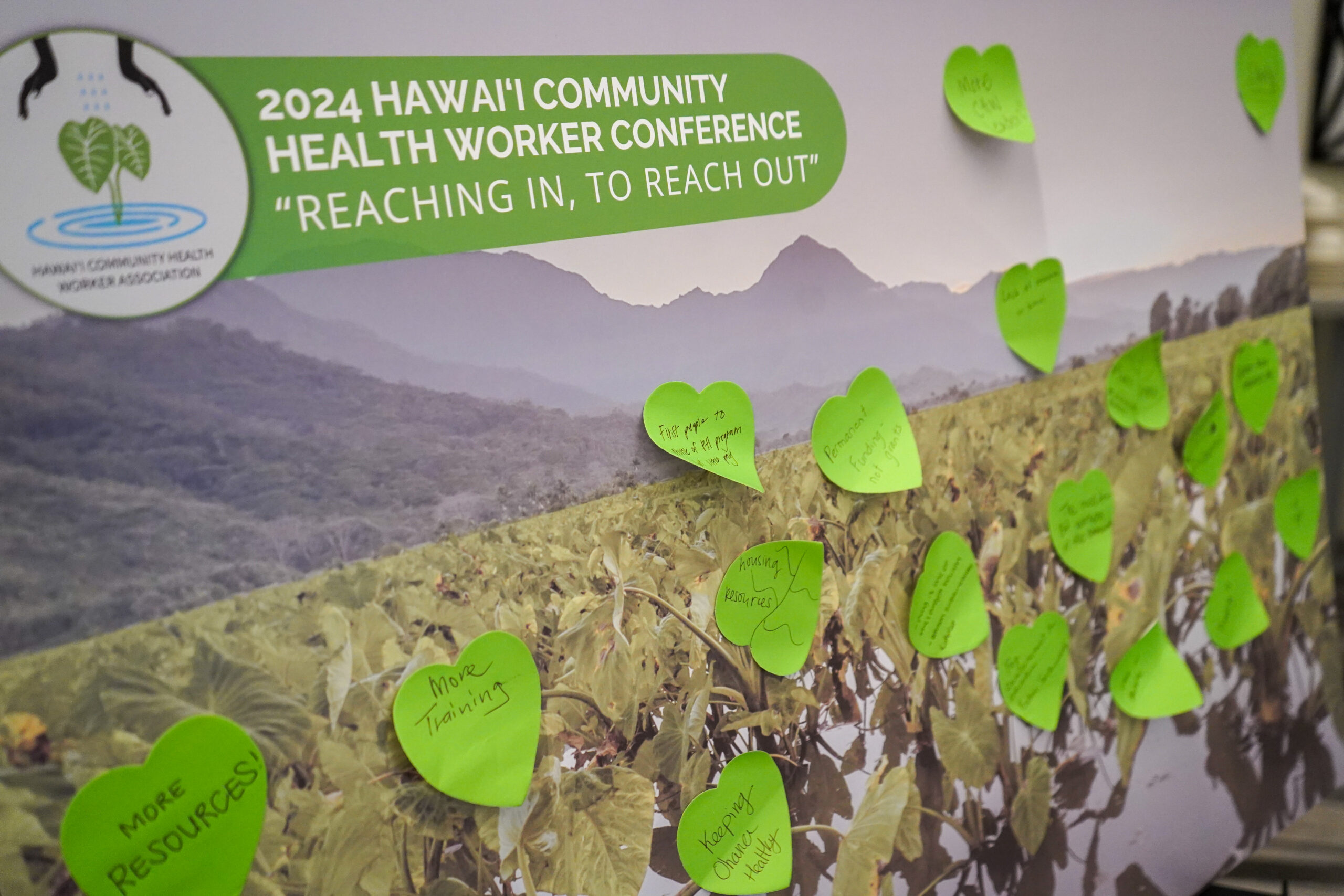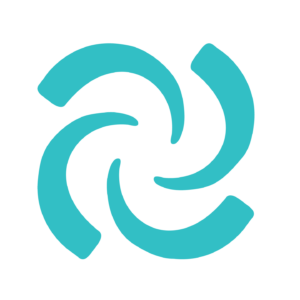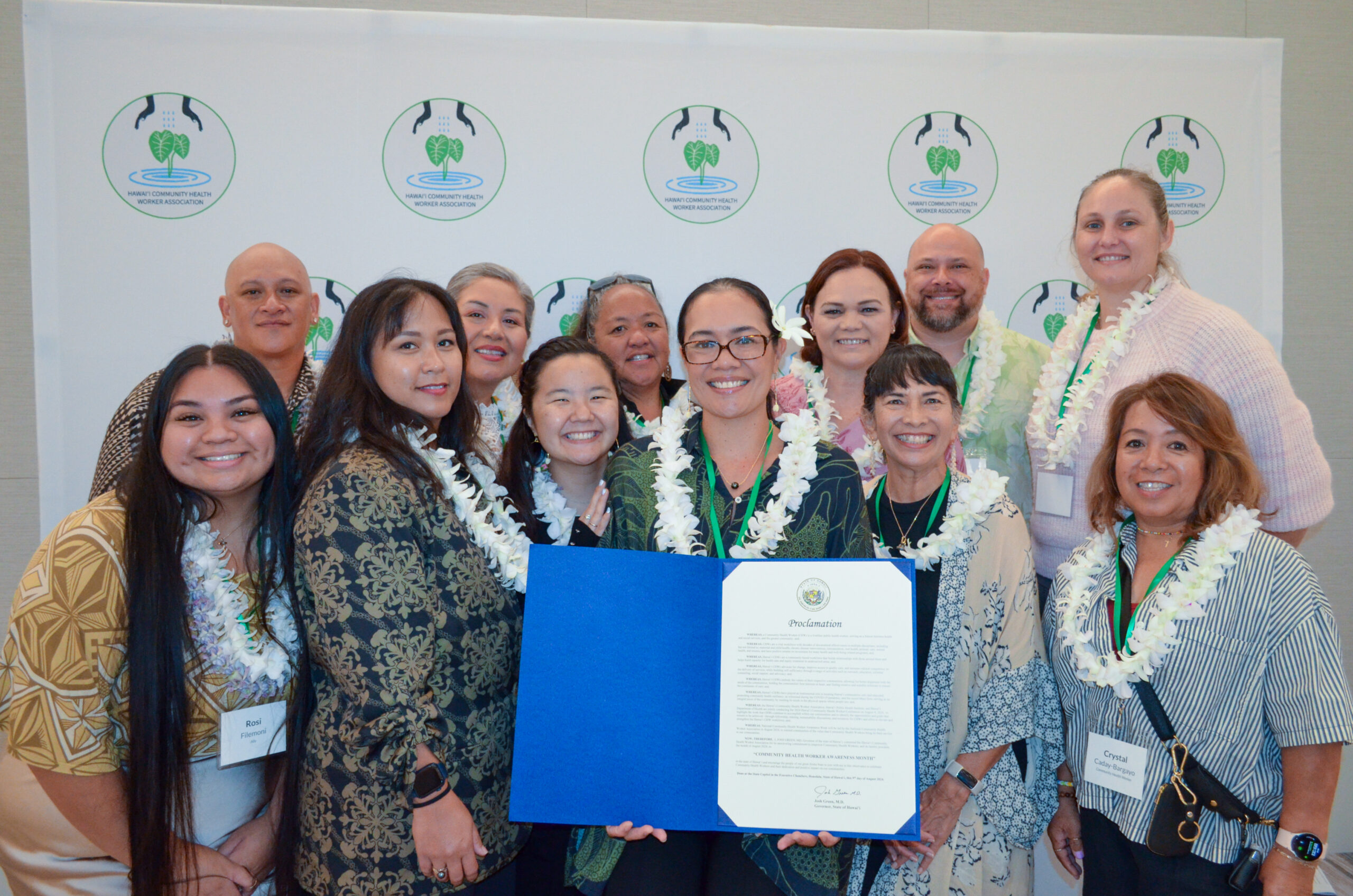How Community Health Workers are Weaving the Fabric of Health Care in Hawai‘i
“I came from the community. I talked like the community.”
Chauncey Hatico
Chauncey Hatico was born and raised in Honoka‘a, a small plantation town of less than 3,000 people nestled on the northeast corner of Hawai‘i Island. Like many in his community, he witnessed health disparities not as an abstract policy issue but as a reality felt in the bodies and lives of those closest to him. From a young age, he helped his own family navigate a health care system that often felt confusing, alienating, and out of reach. In doing so, he began to recognize something many health care institutions still overlook: the difference between access and belonging.
Today, Chauncey serves as the coordinator of the Hawai‘i Community Health Worker Association, a statewide effort housed within the Hawai‘i Public Health Institute (HIPHI). But his work in community didn’t begin with policy or at the Legislature. It began at kitchen tables, in hospital hallways, and in the quiet conversations between community members trying to make sense of discharge instructions and prescription labels.
The advent of Community Health Workers (CHWs) is not a new phenomenon. Long before a term for what they do was formalized, CHWs were already doing the work: the aunties and uncles who checked on neighbors, who translated medical jargon into local understanding, and who accompanied family members to appointments. What has always distinguished CHWs is not just their knowledge of health systems but their deep-rooted presence in the communities they serve.
“Because I came from the community, I looked like the community. I talked like the community,” Chauncey recalled. “They really gravitated towards me.”
Trust at the Center
During his early years at North Hawai‘i Community Hospital, Chauncey noticed that patients often felt overwhelmed in the exam room. Questions went unasked. Follow-up instructions were misunderstood. It wasn’t until later, in the grocery store aisles or on the sidewalk outside the clinic, that people would approach him with the questions they hadn’t known how to ask. This pattern, he realized, wasn’t unique. It was systemic.
CHWs address what medicine alone cannot. They see the invisible questions, the unspoken hesitations. They ask, “Do you have a car to get to that appointment?” or “Do you know what this medication is for?”
Their presence becomes a bridge—between patients and providers, between systems and lived experiences. CHWs don’t just share information; they build trust. And that trust, as Chauncey emphasized, cannot be credentialed.
“You can’t see those things on an X-ray or a lab report,” he said, reflecting on his time doing home visits during the COVID-19 pandemic. “But when you go to someone’s house, sit on their couch, become part of their life—you see the food insecurity, the lack of child care, the overwork. You see what’s keeping them from managing their health.”

“They do this because they love their communities.
Our job is to support them so they can keep doing it.”
Rosilyn Filemoni, Hawai‘i Public Health Institute
“Grants will come, grants will go. So positions will open, and then they close.”
Essential Yet Unfunded
CHWs are already embedded in the community: in clinics; pharmacies; public housing; Native Hawaiian health care systems; and, increasingly, less-traditional settings like faith-based organizations. Their work includes making referrals, offering culturally appropriate health education, guiding people through complex benefits systems, and identifying hidden barriers to care. But perhaps most critically, they are the people whom others turn to in crisis and the ones who stay after the headlines fade.
HIPHI has played a vital role in legitimizing this workforce and supporting its infrastructure. CEO Jessica Yamauchi and statewide CHW Program Manager Rosilyn (Rosi) Filemoni both emphasize that CHWs are essential, not ancillary. CHWs’ impact was most visible during the COVID-19 crisis and the Maui wildfires, where CHWs were among the first responders providing trusted information, helping communities recover, and filling information gaps that formal systems left behind.
“We always say that CHWs don’t become CHWs for career development,” said Rosi. “They do this because they love their communities. Our job is to support them so they can keep doing it.”
That support has taken many forms. HIPHI convenes a growing network of more than 50 allied organizations across the state to explore sustainable funding, offer training, and advocate for policy change. HIPHI supports the work of the Hawai‘i Community Health Worker Association which maintains a statewide roll call of over 400 CHWs, hosts monthly “lunch and learns” tailored to their needs, and provides platforms for CHWs to speak at conferences and policy-oriented events.
But the work remains precarious. Most CHW positions are grant-funded, and there is no standardized certification or reimbursement model in Hawai‘i as of yet. That means job security is fragile and pathways for advancement are limited.
“Right now, it’s very much grant-based,” Chauncey said. “Grants will come, grants will go. So, positions will open, and then they close. And amongst all health professionals, we’re definitely the lowest paid.”
The lack of a standardized credentialing process to create sustainable wage support in Hawai‘i presents a complicated challenge. On the one hand, recognition can help employers better understand and support the CHW role. On the other hand, over-professionalization in pursuit of reimbursement risks excluding those whose value comes from lived experience.
“Some of the OG aunties and uncles have been doing this work for decades,” Chauncey said. “They might not have the capacity to go back to college. I don’t want to exclude anyone.”
The Association is exploring what a Hawai‘i-specific pathway might look like, learning from other states and engaging CHWs directly in the conversation. The goal is not simply to certify, but to sustain. That includes defining “lived experience” as a core qualification—a concept that is foundational to CHW effectiveness but often difficult to quantify. It’s an approach that’s captured widespread attention and pushed Hawai‘i CHWs’ and HIPHI’s efforts into the national spotlight, including recognition from the American Public Health Association as its CHW Group of the Year.
As Hawai‘i continues to navigate systemic inequities worsened by health crises and natural disasters, CHWs stand as both first responders and long-term companions. They are trusted guides in a landscape of uncertainty.
“How can I go address the upstream effects?”

Going to the source, advocating for change
Chauncey’s own path into this work mirrors the very reasons it matters. He began as a young advocate for his own family, transitioned into health care roles at HMSA and Hui Malama Ola Na Ōiwi, and later became a CHW supervisor. Over time, he began to see a troubling pattern: He was helping the same people over and over, always downstream.
“Everybody’s falling in the river downstream,” he said. “And I keep on picking them up, helping them create plans. But how can I go address the upstream effects? That’s where I learned about the position at HIPHI.”
As coordinator, Chauncey now supports CHWs across the islands, helping them find their voice and expand their impact. He helped secure a gubernatorial proclamation for CHW Awareness Month , participated in Opening Day at the state capitol, and even joined national delegations to Washington, D.C., to advocate for policy change. At every level, he brings CHWs’ voices into spaces where they have too often been absent.
Still, his work remains grounded. He mentors new CHWs, continues to meet families where they are, and advocates for sustainable models of care that reflect community realities.
“I think there’s no other workforce that really addresses that intimate relationship and also the social determinants of health,” he said. “And only now are people learning what we’re doing, what we’ve been doing in communities for a long time.”
Rosi echoed this point. “You can’t teach trust,” she said. “You can build it over time, with support. But it starts with who the person is, where they come from, and what they carry into the work.”

Learn more about Hawai‘i’s Community Health Workers, and how you can support their work.
Bridging health and community
The CHW model is not simply about placing someone in a role. It is about acknowledging that community care is both a skill and a relationship. HIPHI’s role, as Jessica makes clear, is to support that relationship and create structures where CHWs can thrive, without losing the community ties that make their work effective in the first place.
That includes exploring hub-and-spoke models, piloting employer toolkits, building out regional support systems, and ensuring that CHWs are present in every decision-making space where policies about their profession are being shaped. “Nothing about us without us,” Chauncey insisted.
As Hawai‘i continues to navigate systemic inequities worsened by health crises and natural disasters, CHWs stand as both first responders and long-term companions. They are trusted guides in a landscape of uncertainty. They are the ones who ask the questions no one else thinks to ask. They are, as HIPHI reminds us, the bridge between systems and people.
Without CHWs, we risk losing more than a workforce. We risk losing the connections that make care real, responsive, and rooted in community.
For Chauncey, that risk is not theoretical. It is personal. “If I can help someone feel seen,” he said, “if I can help them understand what’s happening to their own body, then I’m doing my job. That’s where healing begins.”
And that is where Hawai‘i begins to lead.

Latest Hawaiʻi News
Read the latest Hawai‘i news about our grant-making, our partners, and how we are spending down

